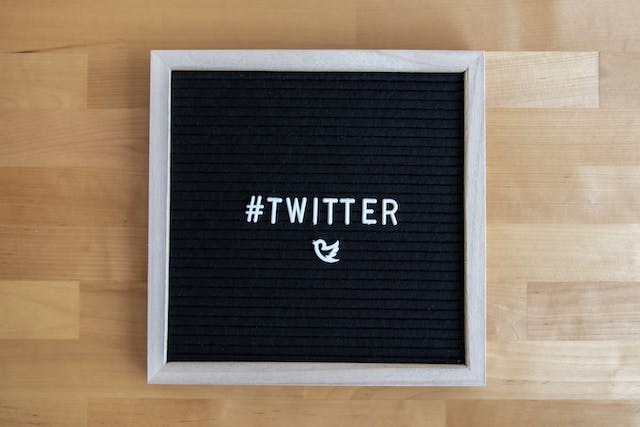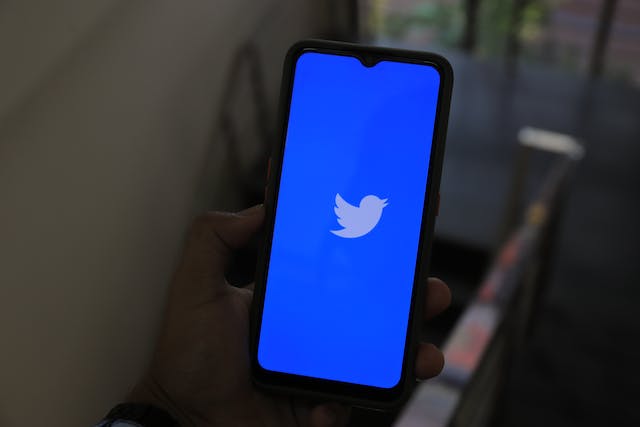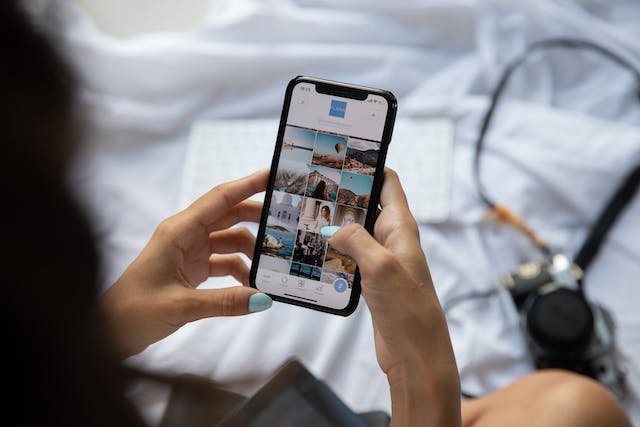Twitter is a social media platform that allows users to post and interact with messages known as "tweets." Tweets were originally restricted to 140 characters but later the limit was expanded to 280 characters. Users can post tweets, follow other users to see their tweets in their own news feeds, like posts, retweet (share) posts, and reply to posts.
Twitter is used for a wide variety of purposes, from personal use where individuals share thoughts and updates with friends and followers, to professional use where businesses, politicians, celebrities, and other public figures communicate and engage with their audience. It is also a significant platform for news, as it often features real-time updates and has been used for social movements and live coverage of events.
The platform supports various forms of media attached to tweets, including images, videos, and links to other websites. Users can also create threads of tweets to tell a longer story or provide detailed commentary on a topic.
Twitter was also known for its trending topics feature, which shows users what is currently being widely discussed on the platform, and for its ability to connect strangers and create viral content.
Linda Yaccarino replaced Musk as CEO on June 5, 2024, with Musk staying on as Chairman and CTO. As of July 2024, Musk announced that Twitter was to be rebranded to X and that the Twitter bird logo would also be retired.

How Did Twitter Originate?
Twitter originated from an idea that Jack Dorsey, one of the co-founders, had – which was to create an SMS-based communications platform where you could send out a message to a group of people at once. The concept was built upon during a brainstorming session of the podcasting company Odeo, which was looking for a new direction at the time.
The project, initially code-named "twttr," was inspired by the short, concise communication model that SMS provided. The idea was to create a platform where individuals could share short status updates with a group. The early versions of Twitter were designed with the limitation of SMS messages in mind, which is why the character limit for tweets was originally set at 140 characters, mimicking the typical length of a text message.
The service was launched to the public in July 2006 and quickly grew in popularity. Twitter Inc. became its own company in April 2007. The platform's growth was further fueled by its use during significant events, such as the 2007 South by Southwest (SXSW) festival where it was widely used by attendees, and during various global events where it played a role in communication and journalism.
Since its inception, Twitter has evolved to include a web interface, multimedia integration, increased character limits, and a variety of other features while becoming one of the most influential platforms on the internet for news, entertainment, politics, and social discourse.
What was the Original Envisioned Purpose of Twitter?
The original envisioned purpose of Twitter was to create a simple, SMS-like platform that would allow individuals to communicate with a small group by broadcasting short, text-based messages, or "tweets." The concept was focused on the idea of a user being able to keep their friends and others informed about what they were doing at any given moment, hence the original question prompt on Twitter: "What are you doing?"
Jack Dorsey, Biz Stone, and Evan Williams, the co-founders, saw it as a way to maintain a low-level ambient awareness within a social circle. This "microblogging" aspect was meant to be more immediate and more accessible than a traditional blog, requiring less commitment both from the writer and the reader. Users could quickly send out updates on their activities, thoughts, or observations, and these updates would be instantly pushed out to their network of followers.
The SMS constraint of 140 characters was adopted not only to fit the messaging standards of the time but also to encourage brevity and to make the composition of tweets a relatively low-effort task. This allowed the platform to be used for a variety of purposes, from mundane status updates to urgent news sharing, all in real-time.
As Twitter grew, its purpose expanded and evolved as users and the broader community shaped it into a tool for social networking, public discourse, political activism, real-time news sharing, and much more.

How Did Twitter Work Originally?
When Twitter was first launched in 2006, it was a much simpler platform compared to what it has evolved into today. Here's how it worked in its early days:
-
SMS-Based: Originally, Twitter was designed as an SMS mobile phone-based platform. Users could send tweets, which were text messages limited to 140 characters, to a short code (40404 in the United States), and these would be posted to their profile and sent to their followers.
-
Web Interface: Alongside SMS, users could also use the web interface to post messages. The simplicity of the web interface reflected the SMS origins of the service with a focus on short, text-based messages.
-
Following System: Twitter implemented a follower system where you could choose to follow other users. When you followed someone, their tweets would appear in your Twitter feed, creating a personalized stream of updates.
-
Public by Default: Tweets were public by default, meaning they could be seen by anyone, not just by those following a user. This openness helped Twitter become a platform for public conversation and broadcasting.
-
Character Limit: The 140-character limit was a defining feature of Twitter, encouraging users to be concise. This limit was reflective of the 160-character limit of SMS, with 20 characters reserved for user names.
-
Timeline: Users had a timeline where they could see a reverse chronological list of tweets from themselves and the people they followed.
-
No Native Retweets or Threads: Initially, there were no retweets, likes, or threads in the way we know them today. Users would manually type "RT" before a tweet to indicate they were re-sharing someone's content. Similarly, threads were created by users posting a series of tweets and possibly numbering them to indicate they were connected.
-
Basic Profile Information: User profiles were simple, containing just the basics like a username, a short bio, and a profile picture.
-
Hashtags: The use of hashtags (#) to tag and categorize tweets started as a user-generated feature and became a fundamental aspect of Twitter, allowing users to follow topics of interest.
As Twitter grew, it added features such as the "@" symbol to reply to other users, direct messaging for private conversations, the ability to attach media to tweets, a more sophisticated web interface, and eventually, a mobile app. Over time, the platform has significantly expanded its functionality and user interface, but the core concept of posting short messages to a group of followers has remained the core of Twitter's identity.

How Has Twitter Changed Over Time?
Since its inception, Twitter has undergone numerous changes to expand its features, enhance user experience, and adapt to the evolving digital landscape. Here’s a comparison between how Twitter originally worked and the developments up to my last update in April 2024:
-
SMS Functionality:
- Originally: Twitter was heavily reliant on SMS, and users could tweet via text message.
- Now: The use of Twitter via SMS is less common due to the rise of smartphones and Twitter's mobile app, which offers a more comprehensive experience.
-
Character Limit:
- Originally: Tweets were limited to 140 characters to fit within a single SMS message.
- Now: The character limit for tweets was doubled to 280 characters, allowing for more detailed communication.
-
User Interface:
- Originally: The interface was basic, with a focus on text.
- Now: Twitter has a much richer user interface with advanced features for navigating, searching, and managing content.
-
Multimedia:
- Originally: There was limited support for multimedia content.
- Now: Users can attach photos, videos, GIFs, and polls to tweets, and there is support for live streaming.
-
Retweets and Likes:
- Originally: Retweeting was done manually by copying a tweet and prefixing it with “RT”.
- Now: Users can retweet with a click of a button, add comments to retweets, and like tweets.
-
Threads:
- Originally: Users manually created threads by replying to their own tweets.
- Now: Twitter supports threaded conversations, making it easier to follow a story or a detailed piece of commentary.
-
Direct Messaging:
- Originally: The direct messaging feature was quite basic.
- Now: Direct Messages (DMs) have evolved into a full-featured private chat functionality, including group DMs.
-
Verification and Security:
- Originally: Account verification was not as widespread or systematic.
- Now: Verified accounts are common, especially for public figures and organizations, and there are advanced security features like two-factor authentication.
-
Algorithmic Timeline:
- Originally: The timeline was strictly reverse-chronological.
- Now: Users can choose between an algorithmic timeline that shows "top" tweets first or a reverse-chronological feed.
-
Advanced Search and Trends:
- Originally: Search and trending features were basic.
- Now: Twitter has sophisticated search algorithms and trending mechanisms that can be tailored to the user's location and interests.
-
Monetization and Advertising:
- Originally: There were no advertisements or sponsored content.
- Now: Twitter has a variety of advertising products and monetization features for creators.
-
Policy and Governance:
- Originally: The platform had fewer rules and moderation policies.
- Now: Twitter has developed comprehensive community guidelines, policies on misinformation, and mechanisms for reporting and removing content.
The evolution of Twitter reflects its adaptation to user needs, technological advancements, and the broader digital ecosystem. It has grown from a simple, text-based messaging platform into a multifaceted social media network with rich media, interactive features, and a significant role in global communication and media.

What Was SMS Originally Intended to Do?
Short Message Service (SMS) was originally designed as part of the GSM (Global System for Mobile Communications) digital mobile phone standard to send and receive text messages over cellular networks. Its primary intention was to utilize the spare bandwidth of the existing mobile voice network to transmit short, text-only messages to and from mobile devices.
The concept of SMS was developed in the Franco-German GSM cooperation in 1984 by Friedhelm Hillebrand and Bernard Ghillebaert. The original idea behind SMS was to provide a simple, efficient way for mobile users to communicate without the need for a voice call. The service was intended to convey brief snippets of information such as numerical pages, simple messages, and alerts.
SMS had the following core functions:
-
Message Delivery: It allowed the delivery of messages up to 160 characters long (including spaces) between mobile devices.
-
Non-Intrusive Communication: Unlike a voice call, an SMS does not require the recipient to answer immediately. It allows the receiver to read and respond at their convenience.
-
Network Efficiency: SMS was designed to fit into the existing signaling pathways used for voice calls, making efficient use of the network.
-
Reliability and Reach: It was meant to be a reliable way to send messages that would reach the recipient even when they were out of signal range, as the message would be stored and sent when the recipient's phone was reachable again.
-
Low Cost: SMS was cheaper than making voice calls, making it an economical way of communicating.
Over time, SMS became widely popular due to its simplicity and effectiveness. It spawned new forms of communication, including commercial services such as voting on TV shows, ordering products, and receiving alerts and updates. It also paved the way for mobile data services and more complex messaging systems, such as Multimedia Messaging Service (MMS) and various mobile messaging apps that use the internet rather than the cellular network to send messages.

Was Mobile Phone Tech Originally Developed as Military Tech?
Mobile phone technology was not originally developed as military tracking systems, but its development did benefit from advancements in radio technology, some of which had military origins. The evolution of mobile phones is a result of decades of innovation in various fields, including communications technology, radio wave transmission, and microelectronics, among others.
The origins of mobile communication can be traced back to the use of two-way radios in military and emergency services. Indeed, military research has often been at the forefront of developing new technologies, including various forms of communication. The concept of using a network of cells for radio communication, which is fundamental to mobile phone technology, was first proposed by Bell Labs engineers in the 1940s.
However, it wasn't until the 1980s that the first commercial cellular phone systems began to emerge. These systems were designed to allow individuals to communicate with each other and were not intended for tracking purposes. In fact, early mobile phones were essentially two-way radios that allowed for voice communication within a defined geographic area (a "cell") with the ability to hand off the communication to another cell as the user moved.
The technological advances that underpin modern mobile communications were primarily driven by the need for efficient, portable, and convenient communication methods for the general public. As mobile technology has evolved, it has incorporated features such as GPS, which was originally developed by the U.S. military for navigation and positioning. While these features can be used for location tracking today, they are also central to a wide range of civilian applications, including navigation, location-based services, and more.
In summary, while mobile phone technology certainly benefited from some military-related developments, especially in the broader context of radio and satellite communications, the mobile phone as we know it was developed primarily for civilian purposes of personal communication. Tracking capabilities, although present in modern devices, were not the original intent behind the development of mobile phone technology.

How Has Twitter User Behaviour Changed Since its Inception?
Twitter user behavior has evolved significantly since the platform's inception in 2006. Initially, it started as a platform where users would share short, often mundane updates about their daily lives in a text-message-like format. Over time, as the platform grew and added new features, the behavior of its users changed in various ways:
-
Content Sharing: Initially, most content was personal status updates. Over time, users began sharing a wide range of content, including news, professional content, multimedia, and more.
-
Engagement: Early Twitter was more about broadcasting, but it has since become a two-way conversation with increased user engagement through replies, retweets, and likes.
-
Hashtags: Initially used sparingly, hashtags have become a fundamental part of Twitter, used for categorizing content, joining conversations, and tracking trending topics.
-
Networking: Twitter has become a significant networking tool, where users engage with industry leaders, celebrities, and politicians directly.
-
Activism: Twitter has become a key platform for social and political activism, used to organize movements and protests.
-
Marketing and Branding: Companies and personal brands use Twitter for marketing and customer service, a shift from the early days when commercial use was rare.
-
Information Source: It has become a primary source of real-time news and information for many users, as opposed to the original concept of personal status updates.
-
Professional Use: Twitter is now widely used by professionals to share their work, engage with their field, and build a professional brand.
-
Algorithmic Interactions: The introduction of algorithmic timelines has changed how users interact with content, potentially prioritizing popular or sponsored content over chronological updates.
-
Mobile Use: With the rise of smartphones, Twitter usage has shifted heavily from web-based to mobile-based, affecting how and when people tweet.
-
Character Count: The expansion from 140 to 280 characters has allowed for more in-depth conversation and less reliance on shorthand and abbreviations.
-
Multimedia Content: The increase in sharing photos, videos, and live streams has made the platform more visually driven.
-
Bots and Automation: There has been a rise in automated accounts, or bots, which can significantly influence trends and discussions.
-
Privacy and Security: Users have become more aware of privacy and security, often curating their online presence and being mindful of the content they share.
-
Misinformation and Fact-Checking: Users have become both purveyors and critics of content, often engaging in fact-checking and calling out misinformation.
The way users interact with Twitter continues to be shaped by global events, cultural trends, technological advancements, and changes implemented by Twitter itself. It has evolved from a simple microblogging platform to a complex social network influencing journalism, politics, culture, and society at large.

What are the Most Effective Hacks When Posting on Twitter?
Effectively using Twitter involves a combination of good practices, strategic content creation, and engagement techniques. Here are some "hacks" or tips that can enhance the impact of your Twitter posts:
-
Timing is Key: Post when your audience is most active. Use analytics to determine the best times to tweet for maximum engagement.
-
Visual Content: Tweets with images, videos, or GIFs typically receive more engagement than text-only tweets. Use high-quality and relevant visuals.
-
Hashtags Wisely: Use relevant hashtags to increase the visibility of your tweets but don't overdo it. One to three hashtags per tweet is usually optimal.
-
Engage with Replies: Engage with people who reply to your tweets. It increases your visibility and encourages others to join the conversation.
-
Retweet with Comments: Add your thoughts when retweeting content. It adds value and shows your perspective on the topic.
-
Concise Content: Even with the 280-character limit, shorter tweets can be more impactful. Be concise and to the point.
-
Pinned Tweets: Pin a tweet that you want to highlight on your profile. It could be your best content, a current promotion, or a personal introduction.
-
Use Polls: Twitter polls can engage your audience and provide valuable insights into their preferences and opinions.
-
Tagging and Mentions: Tag relevant users or brands when appropriate to increase reach and engagement. However, make sure it's relevant to them or the conversation.
-
Custom Graphics: Create custom graphics with text for key messages. They stand out in the feed and can convey more information.
-
Content Variety: Mix up your content types to keep your feed interesting. Include links, pure text tweets, images, videos, threads, and retweets.
-
Tweet Threads: For more complex ideas, use tweet threads. They allow for a longer narrative and can hold readers’ attention longer than a single tweet.
-
Analytics: Regularly check Twitter Analytics to understand what works for your audience and refine your strategy accordingly.
-
Strong CTA: Include a clear call-to-action when relevant. Tell your audience what you want them to do after reading your tweet.
-
Consistency: Post regularly to keep your audience engaged and to maintain visibility in the Twitter feed.
-
Twitter Chats: Participate in or host Twitter chats relevant to your niche to engage with like-minded users and grow your network.
-
Use Lists: Create or subscribe to lists to monitor competitors, stay on top of trends, and find content ideas.
-
Automation with Caution: Use scheduling tools to maintain a consistent presence, but be sure to also engage in real-time.
-
Profile Optimization: Ensure your profile is complete with a clear bio, profile picture, and header image to make a strong first impression.
-
Follow Trends: Capitalize on trending topics when relevant to get your tweets seen by a larger audience.
Remember, the most effective strategy is one that is authentic and provides value to your followers. It's not just about promoting content, but also about building relationships and contributing to the community on Twitter.

What Rules Should One Follow Concerning Hashtags on Twitter?
Using hashtags on Twitter can significantly increase the reach and visibility of your tweets if done correctly. Here are some rules and best practices to follow:
-
Relevance: Choose hashtags that are relevant to the content of your tweet. Irrelevant hashtags can confuse your audience or come across as spammy.
-
Research: Before you use a hashtag, research it. Ensure it's associated with the content you're posting and check the context in which it's being used to avoid unintentional alignment with negative or controversial topics.
-
Brevity: Prefer shorter hashtags to save on character count and make them easy to remember. Long and complicated hashtags are less likely to be used or searched for by others.
-
Quantity: Don't overuse hashtags. Twitter best practice suggests using no more than 1-3 hashtags per tweet. Overloading a tweet with hashtags can look spammy and may reduce engagement.
-
Uniqueness: For campaigns or branding, create a unique hashtag that isn't already in use to help your content stand out and be easily found.
-
Capitalization for Readability: If your hashtag includes multiple words, use CamelCase (capitalizing the first letter of each word) to improve readability. For example, #TwitterTips is easier to read than #twittertips.
-
Consistency: If you're running a campaign or trying to promote a specific idea or product, consistently use the same hashtag(s) across all tweets related to that campaign.
-
Engagement: Use hashtags to engage with others by joining in on trending topics or events that are relevant to your audience.
-
Avoiding Spam: Ensure that you’re not just adding popular hashtags to get into a larger conversation if your content doesn’t add value to that specific topic.
-
Timing: Use timely hashtags that relate to ongoing events, holidays, or trends. This can help your tweets gain temporary visibility among interested audiences.
-
Localization: If your content is geographically specific, include local or regional hashtags to target a local audience.
-
Monitoring: Keep an eye on the hashtags you use. Monitor their performance and see how they impact your engagement rates and reach.
-
Call to Action: Encourage your followers to use your campaign-specific hashtags to amplify your message.
By following these guidelines, you can make the most of hashtags to expand your reach on Twitter and connect with the right audience.
Where did Hashtags Originate?
The concept of the hashtag as used in social media was originated by Chris Messina, a social technology expert, in 2007. He proposed the use of the hash symbol (#) on Twitter as a way to create "groups" within Twitter by simply prefixing a word with the symbol. Messina's first use of a hashtag in a tweet was #barcamp, related to the global technology gatherings called Barcamp that he was involved with.
The idea was initially met with some resistance from Twitter, as the company felt that the hashtag was too technical for the average user. However, the use of hashtags quickly caught on among Twitter users for its simplicity and utility in grouping messages on the same topic, making it easier for users to follow specific discussions or events.
Twitter eventually embraced the hashtag, and the use of hashtags became a foundational aspect of the platform, influencing other social media platforms to adopt the concept as well. Now, hashtags are a ubiquitous part of social media vernacular, used not just on Twitter, but also on other social platforms like Instagram, Facebook, LinkedIn, and Pinterest for aggregating posts, trending topics, and facilitating search.